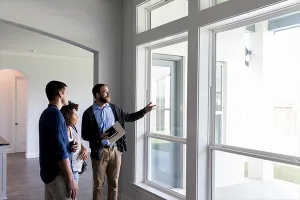
We’ve said it before: The more eco-friendly the home, the easier it is to sell. That’s because today’s home buyers are increasingly interested in sustainability. And it’s not just a lifestyle or ethical stance, either; green features also help homeowners save on utility bills. Real estate professionals who understand a home’s sustainability quotient can boost the property’s appeal to buyer clients and help seller clients understand how to maximize their home’s value.
In most cases, sustainable housing solutions focus on saving water in the bathroom and kitchen or using solar panels to power living spaces. But garages and outbuildings can also be green.
Smart choices in the garage can boost value in several ways:
- Sustainable garages may need less electricity and climate control, which leads to lower utility bills.
- An eco-friendly garage is a well-insulated garage that stabilizes temperature and humidity. In addition to boosting homeowner comfort, this helps preserve vehicles by warding off rust.
- Well-insulated garages can also extend a home’s comfortable living space.
Sustainable Garage Design
If you or a client is interested in a green garage makeover, it’s best to go back to the basics. Start with insulation and weatherstripping before moving onto eco-friendly bells and whistles like solar panels and electric vehicle chargers. Still, for those with the budget for it, going all-in on a green garage could pay off in a big way once the home is listed.
Focus on Insulation
“The number one thing to consider when you want to create an eco-friendly garage is insulating and making sure there is no exposure to the outside,” says Allanah Barnes, interior designer and project director at Freemodel’s Orlando, Fla., office.
Good insulation keeps out cold air, heat, and moisture, reducing energy costs in climate-controlled garages. But a well-insulated garage can also act as a temperature barrier between nature and the side of the house. Insulating the walls between the garage and the rest of the house, including the garage’s door to the interior, can lower the cost of climate control inside the residence. And don’t forget to apply weatherstripping. Caulking and spray insulation foam can help fill any drafty gaps, Barnes says.
Replace the Garage Door
Even the most well-insulated, passively heated or cooled room won’t stay comfortable if gaps and cracks allow cold air and moisture in. Barnes says replacing the garage door is one of the smartest and fastest ways to boost a garage’s energy efficiency.
A 2023 Cost vs. Value Report by Remodeling compared the average costs of remodeling projects with the value those projects retained at resale in 150 U.S. markets. Garage door replacement was one of only four remodeling projects with a higher resale value than the job cost.
So, which garage door to choose? Both wood and steel garage doors are available in models made from recycled materials. If a homeowner opts for wood, aluminum capping can protect and weather-seal the door.
Opt for Sustainable Flooring
Steer clear of epoxy floors, Barnes says. Off-gassing from epoxy resins is harmful to human health, and once epoxy is disposed of, it is also harmful to local ecosystems.
There are several garage flooring options for homeowners interested in sustainability. The best way to find out what’s available is to contact local retailers or construction companies that have a focus on sustainable materials and practices. Sustainable garage flooring may include:
- Concrete
- Rubber tiles from recycled tires
- Plastic or glass tiles from recycled waste
Remember also to use a green sealant. Sealants rated as having low volatile organic compounds reduce the effects of harmful chemicals on occupants’ health and the environment.
Consider an EV Charger
For homeowners who want to capitalize on sustainability, an EV charger can boost home appeal—and, of course, be a practical addition for new vehicle purchases.
“By 2030, more than half of cars sold are predicted to be electric—and in turn, we expect that at-home EV chargers will become a standard and sought-after home feature,” says D.R. Richardson, co-founder of Elephant Energy.
And there’s good news for homeowners who want to jump on the bandwagon before 2033: The federal government is offering a tax credit of up to $1,000 for 30% off the purchase and installation of at-home EV chargers.









